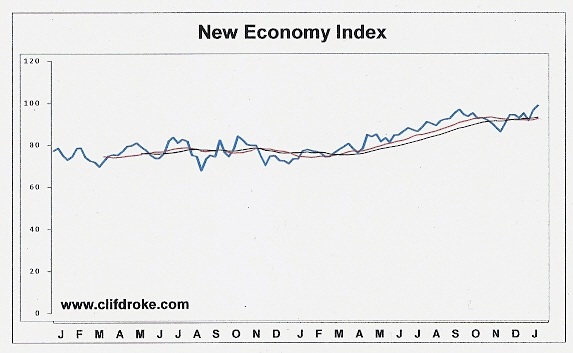Has the Fed Killed the Kress Cycle?
Some have called it the Age of the Central Bank. Record monetary stimulus interventions in recent years have propelled the stock market to levels not seen since the 2008 credit crash. By whatever name you call it, central bank intervention has altered the investment and economic landscapes.
The most common worries surrounding this new interventionism are centered on the inflation outlook. Investors worry that all the excessive liquidity created in the last four years will result in higher commodity and consumer prices. Indeed, the monetary liquidity has found its way into food and fuel price increases, which comprise a substantial part of middle class budgets. By increasing inflation expectations by keeping interest rates at near zero, the Federal Reserve has even forced savers to spend more money and purchase goods in anticipation of even higher prices.
Another impact of the Fed’s ultra-loose money policy is buoyant equity prices. One could assert that this is the main objective of the bank’s quantitative easing (QE) program. By increasing stock prices the Fed is bolstering corporate balance sheets in the face of dwindling demand for exports. The corporate economy has arguably become the Fed’s number one priority in the final portion of the deflationary Kress cycle.
One of the best ways of measuring the immediate health of the retail end of the corporate economy is the New Economy Index (NEI). The NEI averages the stock price performance of five key components of the consumer/small business/e-commerce economy: Amazon.com (AMZN), Ebay (EBAY), FedEx (FDX), Walmart (WMT) and Monster Worldwide (MWW). These five companies collectively represent the sales, employment and transport economy in the U.S. When smoothed out with a 12-week and 20-week moving average to provide “buy” and “sell” signals, NEI provides a real time economic indicator with superior timing to any of the available economic indicators provided by the U.S. government. NEI has captured every notable turning point in the U.S. economy on an intermediate-term basis since 2007.

To the surprise of many economists, NEI is currently at an all-time high and hasn’t confirmed an economic “sell” signal since early 2010. Although we are late in the long-term Kress cycle “winter” season, the signal being flashed by NEI is commensurate with the economic performance of the early 1890s prior to the Panic of 1893 (which answers to the year 2013 in the 120-year cycle). The Fed will almost certainly do everything in its power to keep NEI elevated through 2013 in spite of the strong and increasing deflationary undercurrents from the 120-year cycle. The odds are against the Fed ultimately succeeding.
This leads us to the next commonly asked question, “Has Fed and other central bank action defeated the Kress 120-year Cycle? Can the cycle come down with all the central bank stimulus of recent years?”
If the world's major central banks coordinated a massive stimulus response to the Kress deflationary cycle they could possibly succeed in mitigating the deflationary impact of the cycle. The problem is that while the BOJ, Fed and China's bank are pumping money, the governments of the major countries, including the U.S., are embracing deflationary policies like austerity and deficit reduction. There is no coherent response to the Kress cycle as yet.
The other point to consider is that even if the world's central banks successfully staved off the 120-year cycle, once that cycle bottoms in late 2014 there will be a tremendous lifting of deflationary pressure. In other words, a new inflationary long-term cycle begins. What happens when all the excessive liquidity these banks have created is suddenly put to work after 2014? Massive inflation would be the most likely result. The central banks may end up getting more than they bargained for in their fight against deflation.
2014: America's Date With Destiny
Take a journey into the future with me as we discover what the future may unfold in the fateful period leading up to - and following - the 120-year cycle bottom in late 2014.
Picking up where I left off in my previous work, The Stock Market Cycles, I expand on the Kress cycle narrative and explain how the 120-year Mega cycle influences the market, the economy and other aspects of American life and culture. My latest book, 2014: America's Date With Destiny, examines the most vital issues facing America and the global economy in the 2-3 years ahead.
The new book explains that the credit crisis of 2008 was merely the prelude in an intensifying global credit storm. If the basis for my prediction continue true to form - namely the long-term Kress cycles - the worst part of the crisis lies ahead in the years 2013-2014. The book is now available for sale at:
www.clifdroke.com/books/destiny.html
Order today to receive your autographed copy and a FREE 1-month trial subscription to the Gold & Silver Stock Report newsletter. Published twice each week, the newsletter uses the method described in this book for making profitable trades among the actively traded gold mining shares.
Clif Droke is the editor of Gold & Silver Stock Report, published each Tuesday and Thursday. He is also the author of numerous books, including most recently, "2014: America's Date With Destiny." For more information visit www.clifdroke.com
















